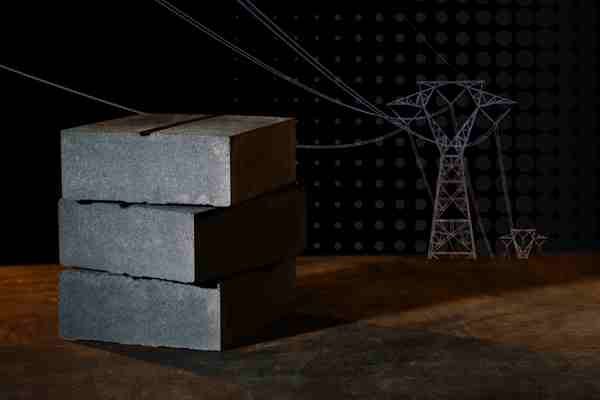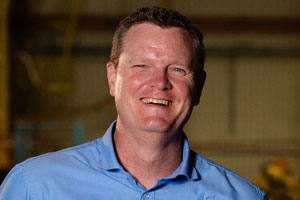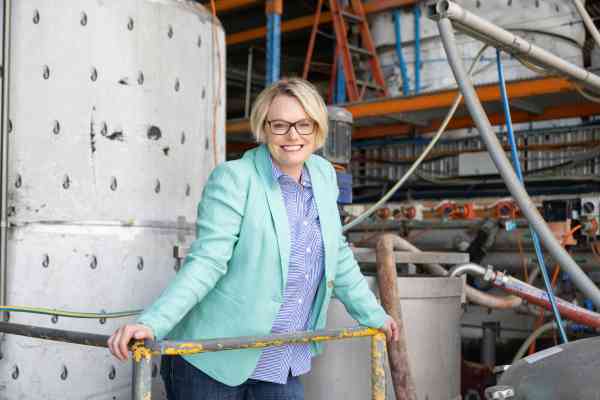Hot Blocks pave way to clean power
Could these thermal blocks solve the puzzle of balancing the grid with sun and wind power?

Could these thermal blocks solve the puzzle of balancing the electricity grid with sunshine and wind power?
Tapping the unlimited power supplied by nature may have a smoother path to our homes with the creation of thermal blocks that can heat and cool on demand.
Traditional electricity grids have struggled with the complex challenges presented by renewable energy due to its intermittent and variable nature.
Australian startup MGA Thermal says it has created a thermal energy storage solution to solve these issues, allowing grid operators to store a huge amount of energy as heat in a safe and relatively simple way.
While traditional power generation from fossil fuels such as coal can be readily matched to demand, attention is rapidly shifting to cleaner energy sources to reduce the threat of climate change and the pollution fossil fuels generate.
Renewable energy sources such as solar and wind, however, are highly dependent on weather conditions, and these fluctuations can create a mismatch between electricity supply and demand that can overload or create a shortfall in power supply.
A number of different technologies are being investigated for use in intermittent storage systems, including battery storage systems, pumped hydro and compressed air.
MGA Thermal’s solution is based on blocks (pictured above) made from metal alloy particles that melt as they are heated, absorbing energy. The energy is stored in the solid-to-liquid phase change and then released as the blocks cool and the particles become solid again.
The shoebox-sized thermal blocks, called Miscibility Gap Alloys (MGA), are designed to store clean energy as heat to either use as green steam in industry or continuously power the electricity grid.
They could also be retrofitted to existing coal-fired power stations, potentially preventing their closure, says MGA Thermal.
"Our technology is attractive for those looking to decarbonise, with a high potential impact in the medium to long-duration energy storage sector."

Last year the company won the Innovation Aus Translation Hero Award 2022 for Excellence. It has also received A$1.26 million in funding from the Australian Renewable Energy Agency (ARENA) to create a demonstration-scale thermal energy storage (TES) system.
The demonstration system has been designed to test a variety of industrial applications including energy storage for the electricity grid, heat used in manufacturing processes, and green hydrogen production.
Once the TES has been completed (expected early this year), six months of experiments will set out to demonstrate charge, storage, and discharge capabilities under a variety of industrial simulations.
Australian electricity supplier AGL has also been running a A$1million feasibility study of the technology at a power station in South Australia, with support from ARENA.
“Our technology is attractive for those looking to decarbonise, with a high potential impact in the medium to long-duration energy storage sector,” says Mark Croudace, CCO of MGA Thermal.
According to the company, its bricks can undergo a non-labour-intensive recycling process to recover the key materials at the end of their working life.
“Even if an MGA block made its way into landfill, it is a stable and non-toxic material and will behave the same as any other stone or rock in the ground,” the company says.
The tech
The MGA technology is based on a material called Miscibility Gap Alloy (MGA), manufactured as MGA Blocks. To create the blocks, very small metal alloy particles are dispersed through a matrix, which melt when the blocks are heated, absorbing energy. The matrix material retains its solid structure keeping the molten particles in place. The energy is stored in the solid-to-liquid phase and is released as the blocks cool and the particles return to solid form. The blocks can be used in Thermal Energy Storage Systems to deliver continuous high-temperature heat or electricity that is safe, low cost, and sustainable. The two key materials in the MGA blocks have different properties so they can easily be separated, and will never mix.
Who funds it
MGA Thermal has received A$1.26 million funding from the Australian Renewable Energy Agency (ARENA) to fund its demonstration system, and Shell has recently provided A$560k in funding through its GameChanger program.
Is it ready to roll
MGA Thermal is building a demonstration-scale thermal energy storage (TES) system designed to test a variety of applications. Australian electricity supplier AGL is also running a $1million feasibility study of the technology at a power station.





